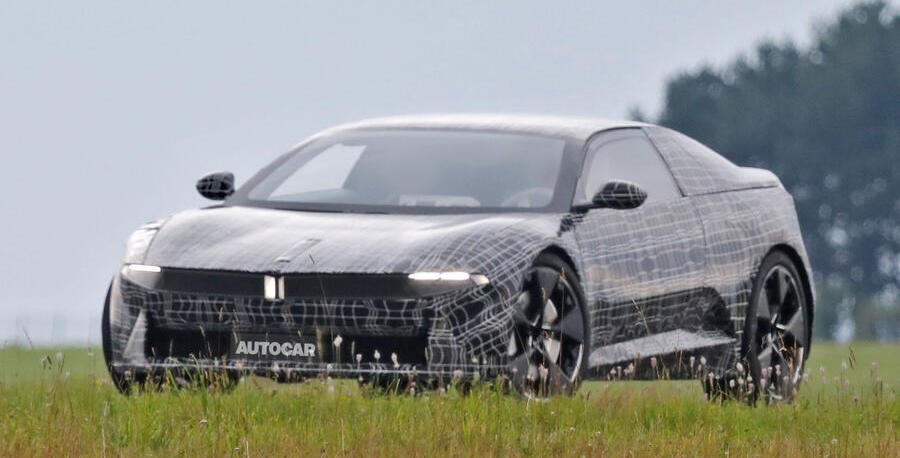BMW priming futuristic electric sports car

BMW is priming a futuristic two-seat coupé in the vein of the famed i8, which may arrive as part of its incoming Neue Klasse electric car line-up.
A new prototype has been spotted testing near the firm’s R&D base in Bavaria. Although heavily camouflaged, it clearly wears several key design cues from the Neue Klasse and Neue Klasse X concepts, such as the reinterpreted kidney grille.
It appears to be powered by four in-wheel motors, given the absence of visible brake calipers. This represents a change of tack from BMW’s existing EVs, such as the i4, which have motors mounted inboard of their axles.
BMW last year invested $16.1 million (£12.6m) into Deepdrive, a motor specialist based minutes away from its R&D base in Garching, near Munich.
Deepdrive claims its drive units – both in-wheel and conventional ‘central drives’ – are more cost- and energy-efficient than those currently on the market, with greater torque density to boot.
For reference, its range-topping RM2400 in-wheel motor puts out up to 250kW (335bhp) and 2400Nm (1770lb ft) of torque in a package measuring 20in in diameter and weighing 37kg.
BMW previously said its new Heart of Joy drive controller, claimed to be instrumental to the character of its its upcoming EVs, can support outputs of up to 1000kW (1341bhp). That exactly matches the combined outputs of four RM2400 motors.
Deepdrive co-CEO Felix Poernbacher recently told trade publication Automotive News that his firm is on track to begin small-scale production of its dual-rotor motors in 2026, with “large-scale” output following in 2028.
Poernbacher added that Deepdrive expects in-wheel motors to account for 5-10% of the total motor market by 2030, implying it will prioritise production of the more conventional central drive units.
This suggests the new BMW coupé will be a strictly limited prospect. It's possible that it could arrive as the flagship in the wave of incoming Neue Klasse models. The first two – a new iX3 and an electric 3 Series – will be launched next year.
BMW has yet to confirm any such plans, but there is an apparent appetite within the company to produce a hard-charging flagship sports car. It previously designed a hybrid mid-engined supercar called the i16 but stopped work on the project at the onset of the Covid pandemic in 2020.
Nouvelles connexes


